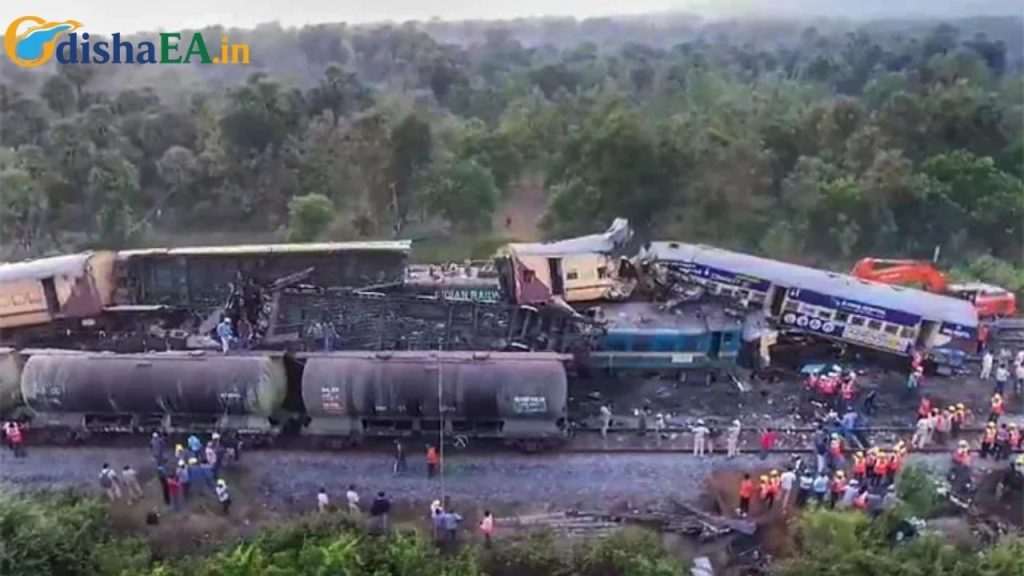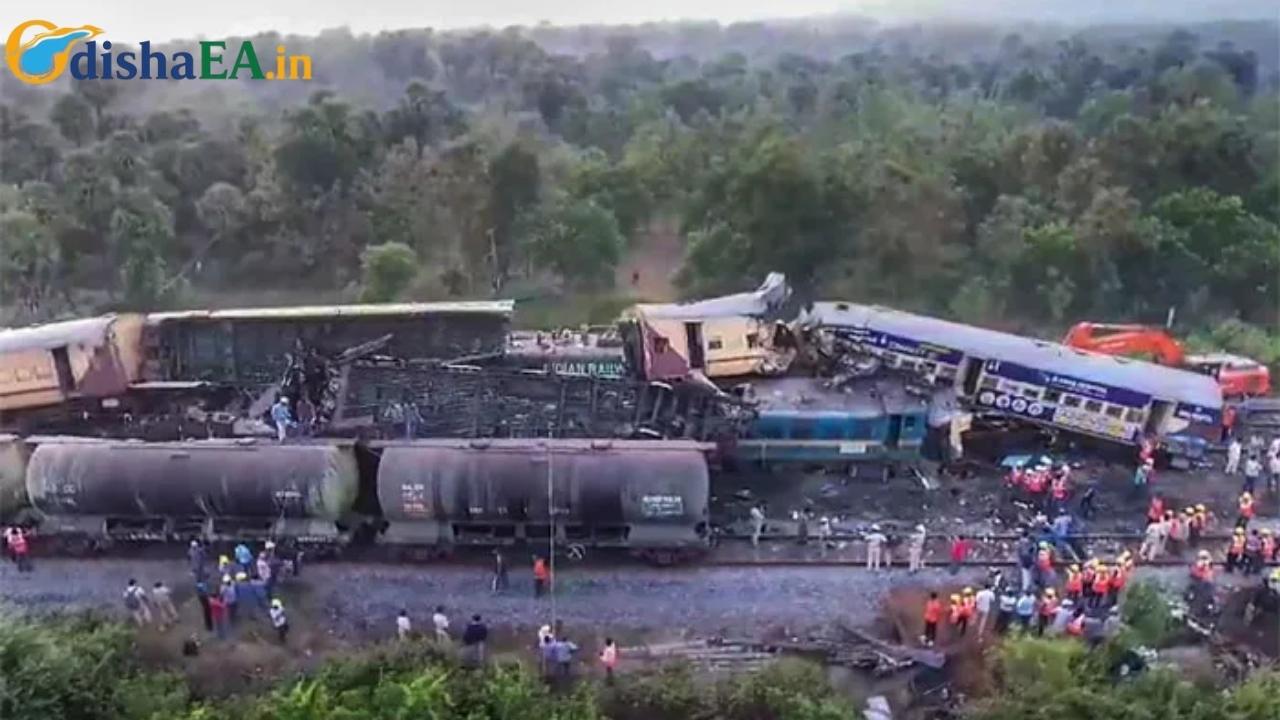When we talk about the Vizianagaram Train Derailment, we’re not just discussing another headline out of India—it’s a real-time example of how transportation infrastructure can impact millions of people in ways we don’t often think about. On August 29, 2025, a goods train carrying heavy cargo derailed in Vizianagaram, Andhra Pradesh, causing chaos across one of the busiest railway zones in the country. With five bogies off the track, officials had to scramble fast to restore some sense of normalcy to the disrupted services.

This derailment isn’t just about a few trains being late. We’re talking about thousands of passengers stranded, critical freight deliveries halted, and ripple effects across the entire East Coast Railway zone (ECoR). To put it in perspective, imagine if one semi-truck accident on I-95 in the U.S. managed to jam traffic from New York all the way down to D.C. That’s the scale of what India’s rail passengers were dealing with here.
Vizianagaram Train Derailment Triggers Major Rail Chaos
| Aspect | Details |
|---|---|
| Incident Date | August 29, 2025 |
| Location | Vizianagaram, Andhra Pradesh, India |
| What Happened | 5 bogies of a goods train derailed at the Signature Bridge area near Vizianagaram station |
| Impact | Major disruptions in East Coast Railway zone; 9+ express/mail trains delayed or controlled |
| Affected Trains | Vande Bharat Express, Howrah–SMVT Bengaluru Express, Prashanti Express, Shalimar–Vasco-da-Gama Express, and more |
| Authorities Involved | East Coast Railway (ECoR), Indian Railways officials, local police |
| Official Updates | Indian Railways |
The Vizianagaram Train Derailment of 2025 is more than just another headline—it’s a reminder of the fragile balance between infrastructure, safety, and public trust. While officials work around the clock to restore normalcy, the incident highlights the urgent need for investment in modern rail systems, not only in India but globally.
For passengers, the takeaway is simple: stay informed, plan ahead, and always keep a backup option. For governments, it’s a wake-up call to prioritize safety as much as expansion.
Understanding the Vizianagaram Train Derailment
So, what exactly went wrong? According to railway officials, five wagons of a freight train slipped off the tracks near the Vizianagaram Signature Bridge. While no fatalities were reported in this particular incident (a silver lining, for sure), the disruption was immediate and severe.
Passenger trains like the Bhubaneswar–Visakhapatnam Vande Bharat Express (20841) and the Howrah–Chennai Mail (12839) had to be held up or rerouted. Travelers experienced long delays, canceled schedules, and last-minute confusion.
Now, if you’ve ever sat through a layover delay at an airport in the U.S., you know how stressful that feels. Multiply that frustration by thousands, and add in the fact that trains are often the only affordable travel option for many in India. You start to see how this derailment became a major crisis.
Why Train Derailments Matter
Derailments aren’t just about bent steel and late schedules—they’re about human lives, economic disruption, and trust in public infrastructure. Let’s break this down:
- Passenger Safety – Even if no one was hurt this time, derailments can (and often do) cause mass casualties. The tragic 2023 Odisha train collision killed nearly 300 people (source: BBC).
- Economic Impact – Freight trains carry essentials like coal, grain, and building materials. Every hour of delay equals millions of dollars in lost productivity.
- Public Trust – Much like Americans depend on the interstate highway system, Indians depend on railways. Each derailment chips away at trust in safety and reliability.
What Causes Train Derailments?
Train derailments don’t just “happen.” They usually come down to a handful of issues:
- Track Failure – Broken rails, weak joints, or poorly maintained tracks.
- Mechanical Failure – Brake malfunctions, axle breaks, or cargo overload.
- Human Error – Miscommunication, signaling mistakes, or fatigue.
- Weather & Natural Causes – Heavy rains, landslides, or flooding weakening the infrastructure.
In the Vizianagaram case, initial reports point to track-related issues, though a full inquiry is still underway.
How Officials Are Responding
To their credit, Indian Railways and East Coast Railway officials moved quickly:
- Deployed emergency crews to the site.
- Began using cranes and recovery equipment to clear the derailed wagons.
- Issued advisories to passengers about delays and diversions.
- Ordered a technical probe to investigate root causes.
This playbook is similar to how U.S. agencies like the National Transportation Safety Board (NTSB) respond to derailments at home—contain the damage, investigate, then recommend safety fixes.
Practical Advice for Travelers
If you’re a frequent train traveler—whether in India or here in the U.S.—here are some practical tips to handle such disruptions:
- Always Book with Flexibility – Choose tickets that allow refunds or rescheduling.
- Stay Informed – Use official apps like National Train Enquiry System (NTES) for real-time updates.
- Pack Essentials – Snacks, water, phone charger, and cash—always handy during long delays.
- Know Alternative Routes – Just like knowing a backroad when I-70 is jammed, check for nearby bus stations or alternate train routes.
Lessons from the U.S. Rail System
Interestingly, the U.S. has had its share of derailments too. For example:
- In 2023, a train derailment in East Palestine, Ohio spilled hazardous chemicals, leading to major environmental and health concerns (EPA report).
- The U.S. sees about 1,000 derailments annually, according to the Federal Railroad Administration (FRA).
The common lesson? Maintenance, regulation, and oversight matter. Whether it’s Amtrak here in the States or Indian Railways abroad, the key to preventing derailments is constant vigilance and modern infrastructure investment.
Long-Term Fixes for Indian Railways
India’s railway network is massive—over 68,000 km of track, second only to China. But with size comes problems:
- Aging Infrastructure – Some tracks are decades old.
- Overcapacity – More trains than the system was designed to handle.
- Funding Gaps – Budget priorities often leave rail safety underfunded.
Proposed fixes include:
- Upgrading tracks and signaling systems.
- Expanding high-speed corridors like the Mumbai–Ahmedabad bullet train project.
- Investing in predictive maintenance using AI and IoT sensors.
Odisha’s Bold Aviation Vision: 14 Airports, 15 Heliports, and Pilot Training for Tribal Girls
Blast on Odisha Railway Track: Maoists Claim Responsibility, Trains Halted
Odisha’s Aviation Revolution: Seaplane Operations and Water Aerodromes Set for October
FAQs
Q1. Was anyone hurt in the Vizianagaram train derailment?
No fatalities or serious injuries were reported, which is a relief given the scale of disruption.
Q2. Which trains were affected?
Major trains like the Vande Bharat Express, Howrah–SMVT Bengaluru Express, and Howrah–Chennai Mail were impacted.
Q3. How often do train derailments happen in India?
According to government data, over 50 derailments occurred in 2022–23, though most were minor.
Q4. Can passengers get compensation for delays?
Yes, depending on ticket type and duration of delay. Passengers should check the IRCTC website for rules.
Q5. How does this compare to U.S. rail safety?
Both countries face derailments, but the U.S. has stricter federal oversight via the FRA and NTSB, while India is still catching up.





